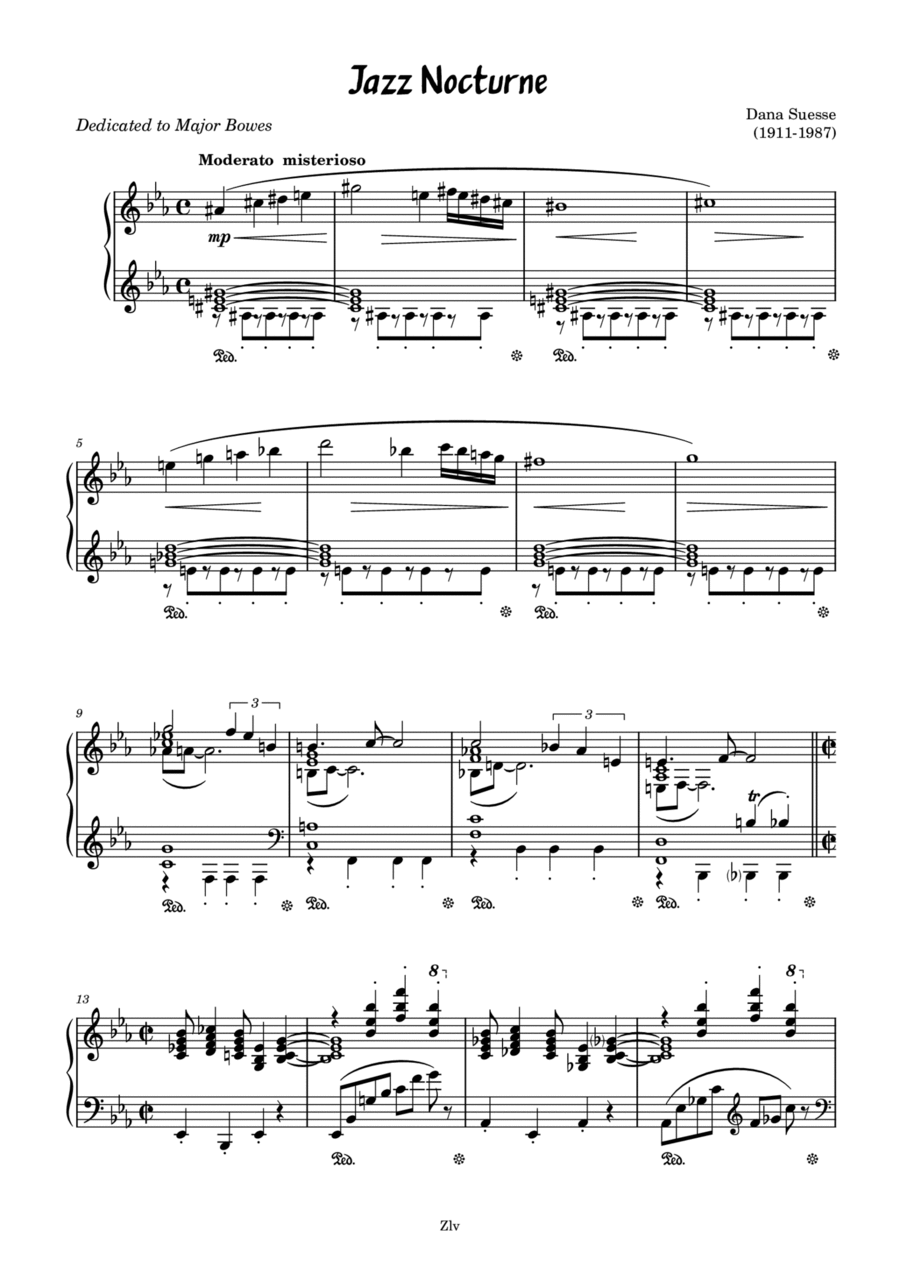Piano Solo - Level 5 - Digital Download SKU: A0.1414692 Composed by Dana Suesse. Arranged by Zellev. 20th Century,Blues,Broadway,Film/TV,Jazz,Musical/Show. Score. 5 pages. Zellev Music #996473. Published by Zellev Music (A0.1414692). Key Signature: Eâ™ majorTime Signature: 4/4Tempo: Moderato misteriosoDifficulty: AdvancedDana Suesse (1911-1987) was an American Composer. She was born in Kansas, Missouri but moved with her mom to New York when she was 15.While in New York, Suesse studied piano under Alexander Siloti, Franz Liszt's last surviving pupil. She studied composition under Rubin Goldmark, one of George Gershwin's teachers, and spent three years studying with Nadia Boulanger after World War II. In 1931, bandleader Paul Whiteman (following Gershwin's Rhapsody in Blue) commissioned her to write Concerto in Three Rhythms.On December 11, 1974, Suesse and her husband produced a symphony concert at Carnegie Hall, devoted exclusively to her compositions. (In the 1990s, Robert Stern produced a CD of the concert using masters from Voice Of America.) On July 31, 1975, the Newport Music Festival (Rhode Island) presented four of her works in their concert series. A year after the Carnegie Hall concert, Suesse and her husband moved to the U.S. Virgin Islands.After her husband's death in 1981, Suesse moved back to New York, the city where she had spent her most creative years. She took two apartments in the Gramercy Park Hotel and continued to write plays and songs for the theatre. Just before her death from a stroke on October 16, 1987, she was writing a new musical, putting the finishing touches on Mr. Sycamore, which had been optioned for off-Broadway, and was looking for a New York home for a straight play, Nemesis.
